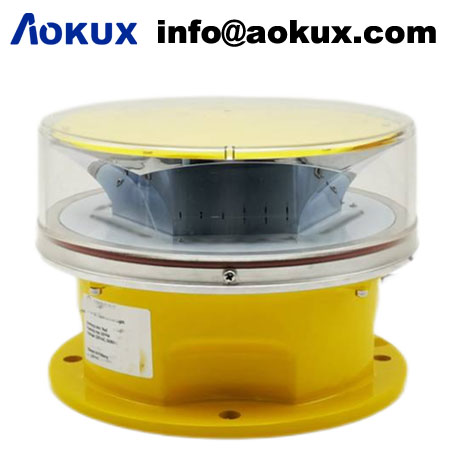Aviation Obstruction Lamp: Safeguarding Airspace with Enhanced Visibility
Introduction
Aviation obstruction lamps are critical components of aviation safety systems, designed to alert pilots to the presence of tall structures and obstacles during low visibility conditions. In this article, we will explore the significance of aviation obstruction lamps and how they enhance visibility, promote safe navigation, and contribute to overall airspace safety.
Enhancing Visibility and Safety
Aviation obstruction lamps play a vital role in improving visibility for pilots, particularly during nighttime flights or adverse weather conditions. These lamps emit bright, high-intensity light, making them highly visible from a distance. By providing a clear indication of potential obstructions, pilots can navigate safely and avoid collisions with tall structures such as buildings, towers, or wind turbines.
Compliance with Aviation Regulations and Standards
To ensure uniformity and effectiveness, aviation obstruction lamps must adhere to international aviation regulations and standards. Organizations like the International Civil Aviation Organization (ICAO) and Federal Aviation Administration (FAA) establish guidelines regarding light intensity, color, flash patterns, and placement of these lamps to minimize risks associated with aviation obstacles.

Types of Aviation Obstruction Lamps
There are several types of aviation obstruction lamps available, each serving specific purposes based on the height, location, and proximity to airports. These include steady-burning red lamps, medium-intensity white strobe lamps, and high-intensity white strobe lamps. The choice of lamp type depends on the specific requirements and guidance provided by aviation authorities.
Aviation Obstruction Lamp
|
Aviation Obstruction Lamps
|
Technological Advancements
Advancements in lighting technology have greatly enhanced the capabilities and efficiency of aviation obstruction lamps. Traditional incandescent bulbs have been replaced by more efficient and durable options such as Light Emitting Diodes (LEDs). LED lamps offer advantages such as long lifespan, low power consumption, and improved visibility, making them an ideal choice for aviation applications.
Remote Monitoring and Control Systems
To ensure the continuous functionality of aviation obstruction lamps, remote monitoring and control systems have been introduced. These systems allow operators to monitor the status of lamps in real-time, detect faults or malfunctions, and take prompt corrective actions. Remote control capabilities enable operators to adjust light intensity or flash patterns as necessary, ensuring optimal performance.
Impact on Airspace Safety
Aviation obstruction lamps play a crucial role in safeguarding airspace by reducing the risk of collisions between aircraft and tall structures. By providing clear visual guidance, these lamps enhance situational awareness for pilots, enabling them to make informed decisions during their flight path. The increased safety and reduced possibility of accidents contribute to the overall safety of the aviation industry.
Future Innovations
As technology continues to evolve, the future of aviation obstruction lamps holds exciting possibilities. Advancements may include the integration of artificial intelligence algorithms for predictive maintenance, wireless connectivity for seamless communication, and the incorporation of renewable energy sources for sustainable operation. These innovations will further enhance the efficiency, reliability, and environmental sustainability of aviation obstruction lamps.
Conclusion
Aviation obstruction lamps are essential components of aviation safety systems, ensuring enhanced visibility and promoting safe navigation through airspace. Compliance with regulations, advancements in lighting technology, and the integration of remote monitoring systems contribute to the effectiveness and reliability of these lamps. As the aviation industry progresses, it is crucial to stay updated with the latest technological developments to continue improving the safety and efficiency of aviation obstruction lamps, ultimately ensuring the protection of pilots, passengers, and the integrity of our airspace.

